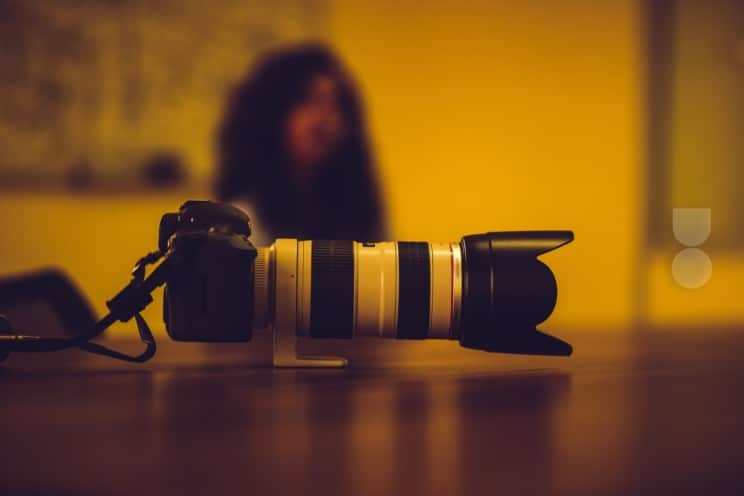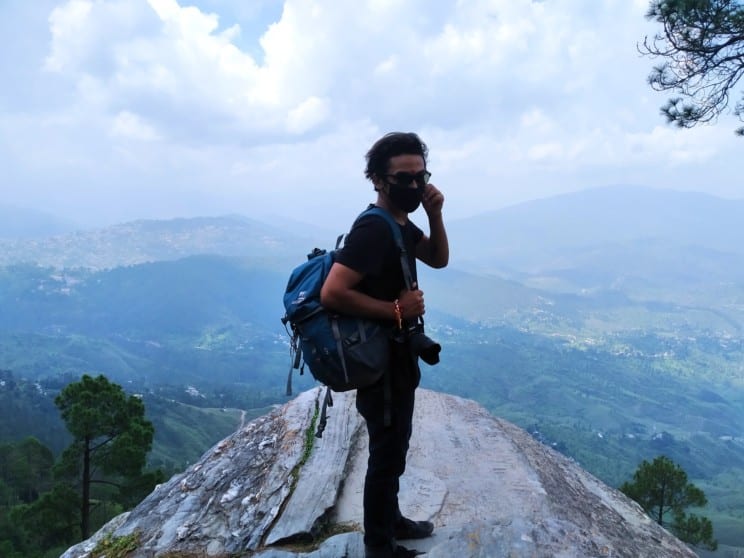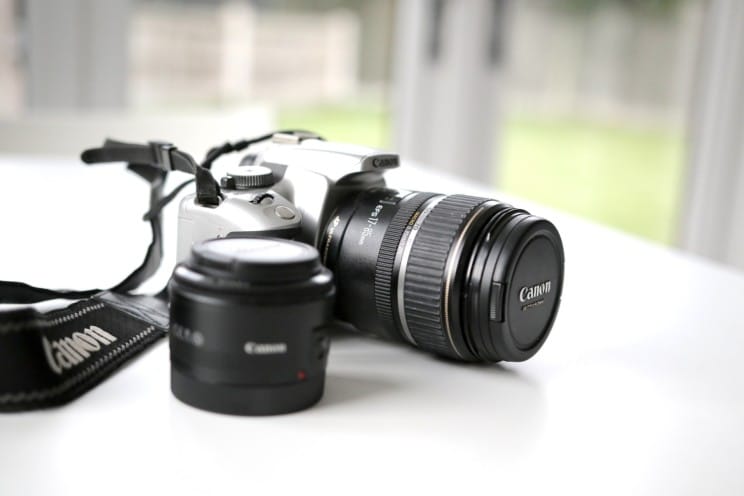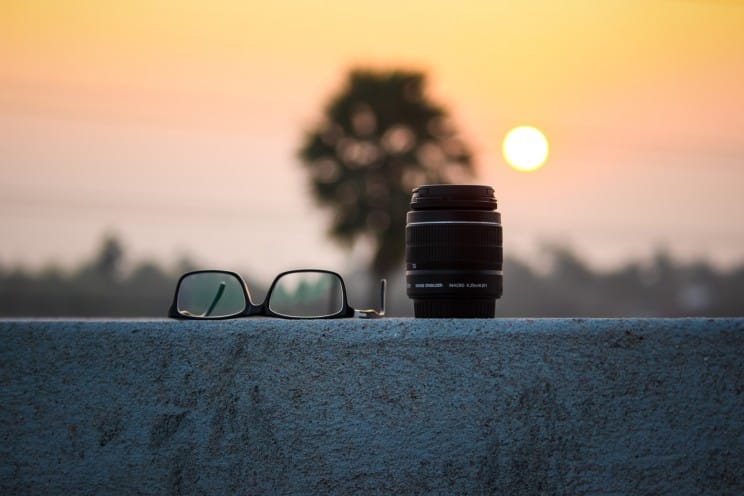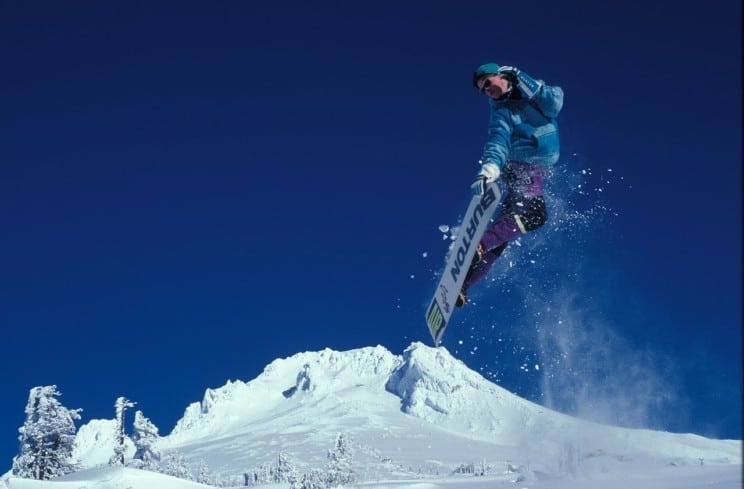Best Lenses for Sony ZV E10
Bloggers, vloggers, and video content creators on a budget prefer Sony Zv E10 for many reasons.
For instance, you get to shoot excellent 4K videos and explore outstanding slow-mos with lots of freedom to adjust your settings.
In this article, we are going to shine a spotlight on the best lenses for Sony Zv E10.
We’ll also look at the basics of choosing the best lens for your Sony Zv E10.
Best Lenses for Sony Zv E10 Worth Spending On
Here are a few top recommendations you could look into:
1. Sigma 16mm f/1.4 Contemporary DC DN Lens for Sony E
One of the best wide-angle upgrades you can ever grab for Sony Zv E10 is Sigma 16mm f/1.4 Lens.
With 16 elements in 13 groups, you can say goodbye to optical aberrations.
This is an f/1.4 kit lens that lets users enjoy wonderful low-light streams. Its focal length is ideal for nature and event photography, where close-ups abound.
The optical design of this E-mount lens includes seals that render it dust and splash-proof.
At its price point, you expect Sigma 16mm f/1.4 Lens to include within its design components that resist strong light incidences.
And now that flare and ghosting are no longer concerns, you can expect extremely sharp moments with better contrasts.
Key highlights
- 16mm focal length
- Sony E-mount compatible
- Large f/1.4 aperture
- 16 elements in 13 groups
- 9 rounded diaphragm plates
- Compact design
- Minimum focusing distance: 9.8 inches
2. Sony E PZ 18-105mm F4 G OSS
The beauty of Sony E PZ 18-105mm F4 G OSS is that it doesn’t lose resolution and contrast throughout the entire zoom range.
This is a nice feature, especially for those shooting from a distance.
Operating at 18mm-105mm, this lens doubles up as both a telephoto and a wide-angle lens. This is a convenient combination for versatile photographers.
Notwithstanding, the power zoom, OSS, and optical image stabilization make this lens an unbeatable choice for those shooting videos.
Sony E PZ 18-105mm F4 G OSS is equipped with both extra-low dispersion glass and aspherical elements.
Their purpose is to minimize chromatic distortions and guarantee superlative sharpness and contrast.
Of course, the lens design is a little bulky but the weight remains considerable.
Key highlights
- 18-105mm focal length
- Built-in image stabilization
- 3 aspherical elements
- Aperture size: f/4-22
- 6x zoom range
- Sony E-mount lens
- 2 Extra-low dispersion elements
- G lens bokeh
3. Sony – FE 50mm F1.8 Standard Lens
If you are so much into portrait photography, then bokeh backgrounds matter a lot, right?
The good news is one of the best lenses for Sony Zv E10 that can help you shoot with defocused backgrounds is Sony – FE 50mm F1.8 Standard Lens.
This mobile and manageable lens boasts 6 elements in 5 groups.
These ensure you get highly sharp images (sometimes edge to edge if you stop it down).
A DC motor system exists for optimal focusing—with both manual and autofocus present.
Sony – FE 50mm F1.8 Standard Lens has a pretty wide aperture.
So it still delivers exemplary details even in low light. The only tradeoff is that it doesn’t come with optical image stabilization.
Key highlights
- F/1.8 7-blade circular aperture
- Double gauss configuration for eliminating field curvature and distortion
- E-mount Sony lens
- 50mm focal length
- 6 optical elements in 5 groups
- No image stabilization
4. Tamron 17-70mm f/2.8 lens
Tamron 17-70mm f/2.8 is considered one of the best everyday “walk-around” lenses for pedestrian photographers.
At close ranges, it delivers images with a warmer tone than many of its competitors.
The sharpness and image stabilization are extremely reliable.
Even though it runs on a motor-based autofocus drive, autofocus is still decent.
However, once in a while, you can experience focus distance shifts.
Tamron 17-70mm f/2.8 is quite a versatile tool. It works well with both APS-C and full-frame sensors.
Plus, it may not be designed to be a macro lens, but it can focus at close ranges.
One of the reasons content creators adore this all-purpose lens is that it retains its f/2.8 aperture across the entire zoom range.
Some lenses darken and lose clarity in shots. Thankfully, this one has excellent optics and draws in sufficient light.
When shooting at a wide angle, the lens’s minimum focusing distance is somewhere near 19 cm, with stellar magnification assured.
At telephoto, where magnification is slightly lowered, the focus distance becomes roughly 40 cm.
This is also one of these few kits that come with a generous warranty-about 5 to 6 years.
Key highlights
- 17-70mm focal length
- Optical image stabilization
- 4.1x zoom ratio
- Moisture-resistant construction
- 16 elements in 12 groups
- F2.8 aperture
5. Sony 20mm F2.8 Prime Fixed Lens
Sony 20mm F2.8 is an ultra-compact favorite among serial photographers.
And by serial we mean those who pack a lot and appreciate any gear that doesn’t add too much bulk to the load.
It’s easy for anyone to dismiss the quality of this lens based on its price.
At roughly $300, it delivers acceptable image sharpness with little to no distortions.
You should credit that to Sony’s commitment to offering excellent optics across all its products.
Sony ZV-1, the predecessor to was extremely compact.
Now, when you throw Sony 20mm F2.8 on ZV-E10, it barely adds more size or weight.
So you end up with a compact setup.
Besides affordability and portability, this lens is extremely versatile.
You will find it with those who major in portraiture, video, travel, and street photography.
Key highlights
- Minimum focusing distance: 0.66 feet
- Max magnification: 0.12x
- F 2.8 aperture
- 7-blade circular aperture
- APS-C format
- Internal stepping motor
- Focal length 20mm
- 3 aspherical lens elements
- Sony E-mount
6. Sony FE 200-600mm F5.6-6.3 G OSS Super Telephoto Zoom Lens
Given that its focal length is beyond that of normal telephoto lenses, it automatically turns into a super telephoto.
This beast comes with internal zoom, which when in use, balance is retained across the entire focal length.
For such a giant lens, its autofocus is extremely fast and images come out in their full original glory.
Thanks to the OSS technology, you don’t need to worry about blurriness-whether you are using a tripod or not.
When it comes to the quality of construction, this lens has been designed to extreme perfection.
There are a few setbacks with Sony FE 200-600mm.
First, it doesn’t have a lock, and given its size, it would be great to have some support.
Secondly, its bokeh becomes lousy sometimes.
Lastly, it’s really heavy but you could let that slide as many other telephoto lenses are massively built too.
Key highlights
- Focal length: 200-600mm
- F5.6-6.3 aperture
- 11-blade circular aperture
- Internal zoom mechanism
- Nano AR Coating
- Supersonic wave motor system
- Extra-low dispersion glass
7. TAMRON 11-20MM F/2.8 Lens
Many people are too attached to Sony’s products to the extent they forget there are other underrated upcoming competitors.
A good example is Tamron.
One of its lenses, TAMRON 11-20MM F/2.8 Lens, almost outshines wide-angle lenses from many household name brands.
With an aperture of f/2.8, TAMRON 11-20mm, it offers unprecedented brightness for super-detailed photos.
Its AF drive system is not only fast but extremely precise as well. On top of it, it runs silently thanks to the Rapid-extra-silent Stepping Drive.
The kit’s optical performance is outstanding. It packs 12 elements in 10 groups.
That’s pretty amazing considering it’s an inexpensive gear.
The elements consist of extra-low dispersion and aspherical properties to guarantee superb image quality
This lens is designed to be a traveler’s companion.
To bravely withstand the harsh outdoors, its interior is both moisture-resistant and dustproof.
Above all, TAMRON 11-20mm is compact and supremely lightweight.
You could have it on your Sony Zv E10 all day and not feel burdened.
Key highlights
- Aperture size: f/2.8
- 12 elements in 10 groups
- Focal length
- Moisture resistant construction
- Fluorine-coated interior
- Sony E-mount lens
- Compact and lightweight
8. Sony SEL90M28G FE 90mm f/2.8-22 Macro G OSS
Serious macro photographers searching for a lens dedicated to macro photography can rest now. Why?
Because Sony SEL90M28G FE 90mm lens is likely to meet, even exceed their expectations.
The lens effectively suppresses aberrations thanks to the floating focus mechanism, advanced spherical elements, and special interior coating.
The macro images you get are Tack sharp images. Its bokeh too is terrific.
Some lenses will need you to get your eyes off the viewfinder to switch the focusing system.
Imagine doing that for fast-moving subjects. You could miss a crucial moment.
But with Sony SEL90M28G FE 90mm lens, you just trace the focus ring and make the adjustment.
Super easy and convenient.
This lens is incredibly built and can withstand the rigors of outside shooting. That’s why it costs quite a lot.
It’s fairly large, but thankfully not too heavy.
Any professional macro photographer with Sony Zv E10 should consider trying out the Sony SEL90M28G FE 90mm lens.
Key highlights
- Maximum magnification: 1.0x
- Focal length: 90mm
- Aperture range: f2.8
- 9-blade circular aperture
- OSS stabilization
- Focus hold button
- Interior Nano AR coating
- Focus range limiter
- Minimum focusing distance: 0.92 ft.
- Dust and moisture-resistant construction
- Sony E-mount telephoto lens
- Advanced spherical elements
- DDSSM motor system
How to choose the best lenses for Sony Zv E10

When evaluating what lens to buy for your Sony Zv E10 rig, consider the following:
Focal length
The focal length decides how much detail will be captured in a single frame. It also determines how near or far you can stand from a subject.
This metric is in millimeters and if it appears as a solitary measurement (35mm), then that’s a prime lens.
Prime lenses don’t move so it’s up to the photographer to draw closer or further from the subject.
It’s easy to tell yourself or imagine that the chances of moving about will be there.
Sometimes there aren’t. So think through before settling for a prime lens.
Lenses whose focal length has two measurements (i.e. 20-70mm) are zoom lenses.
The range represents the distance the lenses can move about.
Such kits allow you to capture footage from various distances without moving.
Before you throw shade on prime lenses, there is something you need to know.
They are the best when it comes to producing sharp and clear shots.
Plus many boast super-fast apertures in a smaller, lightweight body.
Prime lenses are great for portraiture and low-light photography.
Aperture size
The aperture decides how much light the lens will let in. As such, it must be clear to you what size works best for your needs.
An aperture is imprinted as f/2, f2, or 1:2. All these representations mean the same thing.
When the number is lower, that means the aperture is wider and lets in sufficient light.
So it’s best that you strive to buy kits with a small number.
They are relatively expensive though.
But in the end, they allow you to employ crazy fast shutter speeds for those high-octane events.
Image stabilization
Image stabilization is a really crucial factor to consider. Particularly so if you are a travel blogger.
Stabilization technology minimizes camera shakes while increasing the chances of footage coming out smooth and crystal clear.
The tech exists a lot in telephoto lenses.
Build quality
It’s not a skewed judgment to say that the most expensive lenses are of magnificent quality.
Such systems entail top-of-the-line features, and this easily shoots their cost of production up.
A few unique features of robustly designed lenses include dustproof, waterproof, and scratchproof.
Such kits are meant for harsh outdoor photography.
Telephoto, wide angle, or standard?
Your choice here will depend upon the object you want to shoot.
Wide-angle lenses are the go-to for shooting landscapes and architectural subjects.
Any lens with a measurement between 35mm and 70mm is considered a standard lens.
Since their shots come out exactly as what the human eye sees, they are preferable for street photography and portraiture.
Any lens with a focal length beyond 70mm is a telephoto beast. Some do stretch as high as 300mm and up.
Telephoto lenses are popular amongst sports and wildlife photographers because they deliver amazing close-ups even when you are very far away from your subjects.
Cost
This last bit here is where many people mess up. Basically, some opt to skimp on quality just so they don’t spend much.
Others overpay simply because they did not do a thorough product comparison.
What you should pay a lot of attention to is the value of the lens.
Just ask yourself this question, “What level of professional standards I’m I hoping for?”
Your answer could help you spend the right amount of money on the right kit lens.
Final Thoughts
In and of itself, Sony Zv E10 is a reliable workhorse.
However, most of the kit lenses it comes with are going to be cheap and of less value (more so in the long run).
Thankfully, you have gone through a list of the best lenses for the Sony Zv E10.
The list comprises both standard, wide-angle, and telephoto choices.
Your final pick will depend on your budget and the nature of your photography.

